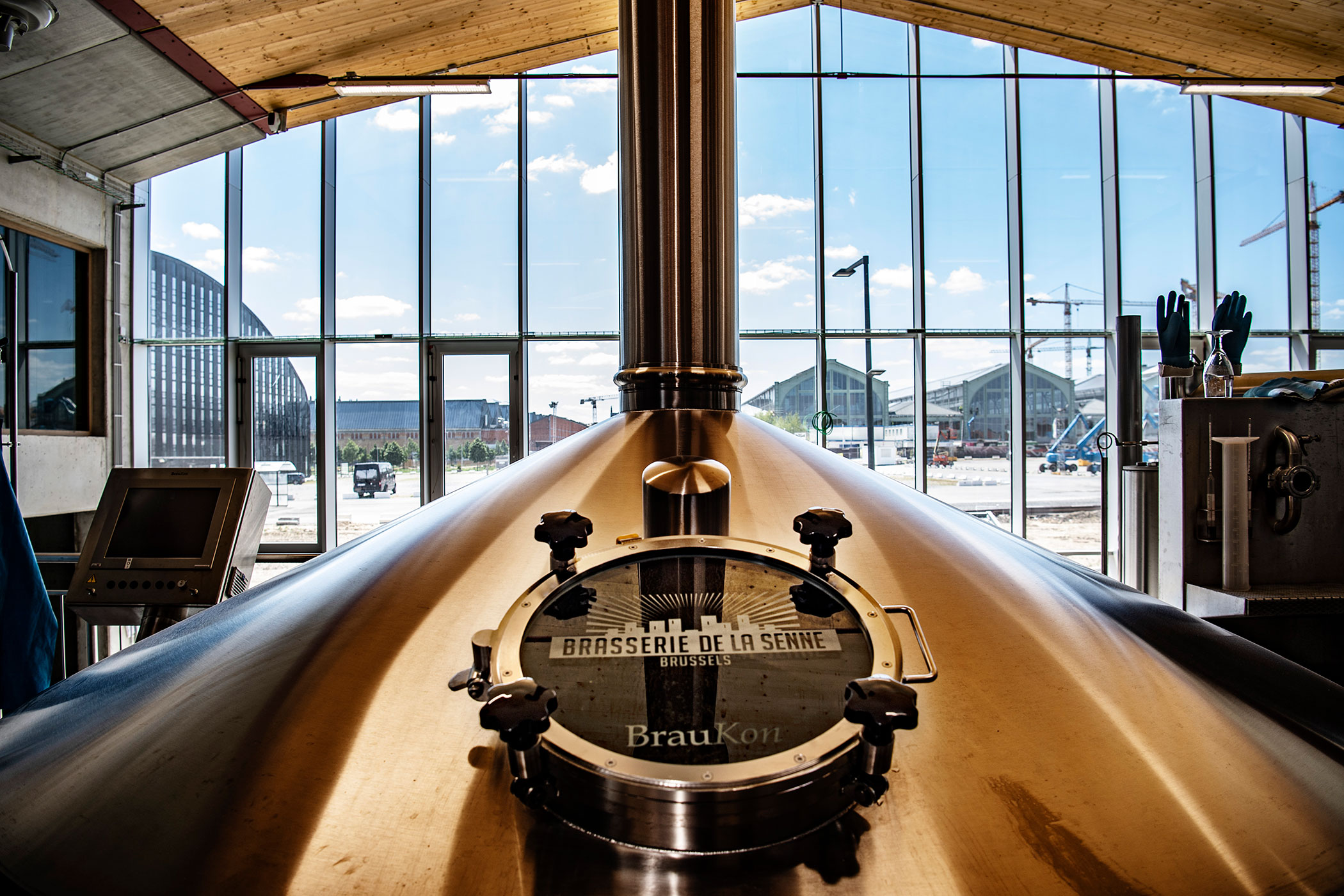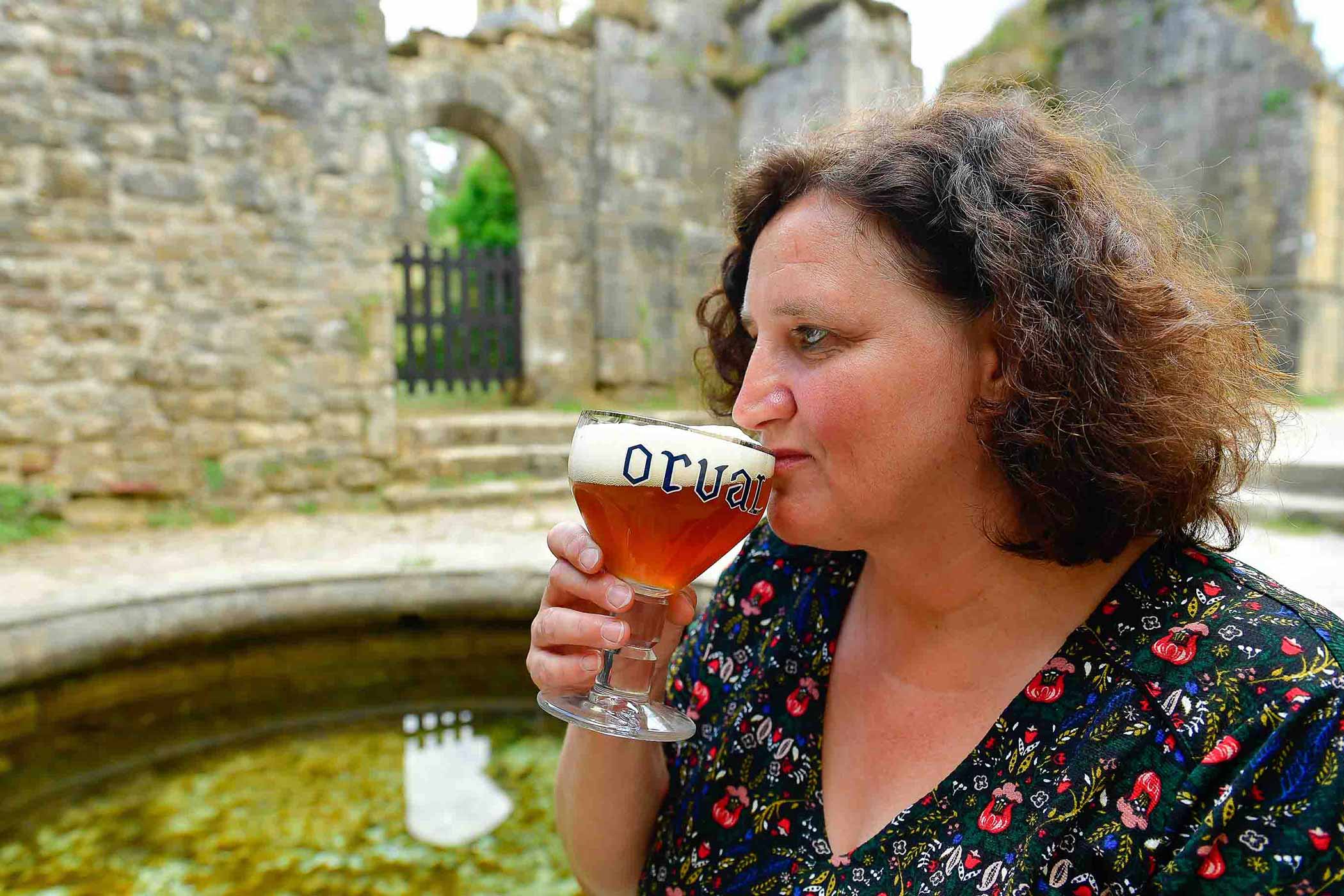Shop
Brasserie de la Senne: The People’s Brewery of Belgium
A river (of beer) runs through it.
Looking For More?
Best Breweries and Bars to Visit in Belgium
Editor’s Note: During the end of September and beginning of October 2023, I had the fantastic opportunity to travel to Belgium on a beer trip hosted by Bruz Beers and Purpose Brewing. For ten days, we bussed around Belgium, visiting countless breweries and pubs, meeting legendary brewmasters, trying beer from centuries-old breweries, and learning about Belgian beer culture. This article is part of a series sharing some incredible stories from my travels.
If you want to join this trip next year, stay tuned to Bruz’s events page here!
Yvan De Baets and his team had to laugh when his brewery Brasserie de la Senne opened in Brussels, Belgium, in 2010.
“We had a joke at the time,” De Baets told me when I visited the brewery during a ten-day group beer trip to Belgium. “We said that at once, we have doubled the number of breweries in Brussels. And the previous guy who did that was probably 1,000 years ago!”
Despite centuries of beermaking, the Belgian capital in more recent times had a severe lack of breweries within its borders.
Besides de la Senne, can you guess the only other brewery operating inside the city?
We’ll give you a three-word hint: lambic and gueuze.
Although, if you counted Cantillon and de la Senne as the only two Brussels breweries, count yourself lucky.
They’re both fantastic. And behind them, both have passionate producers.
So it’s no surprise their fates and legacies occasionally intertwined.
Although now a landmark as much a part of the fabric of Brussels as Cantillon, de la Senne couldn’t be more different than the famed spontaneous fermentation brewery.
No, you won’t find any gueuze and lambics in this immaculately clean brewhouse.
Instead, you’ll find beers that De Baets likes to drink. It’s as simple as that.
Well, of course, not exactly.
From Cantillon and Cleaning Kegs to De La Senne and Beers With Friends
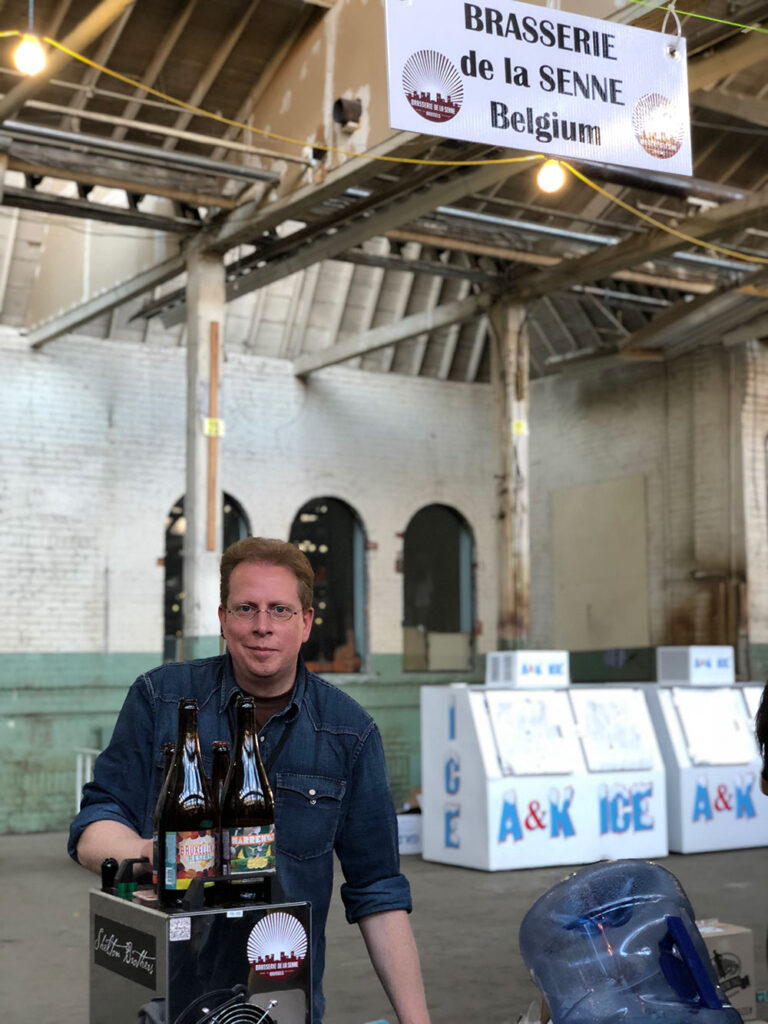
Photography courtesy of Kim Mercado ©2018
De Baets believes to his core that behind a good beer, there should be good values.
Something Cantillon’s former head brewer, Jean-Pierre van Roy, taught him at nineteen years old. De Baets says in 1989, he met van Roy and, after a five-minute conversation, fell in love with beer.
“At the time, at least, those values were in danger,” says De Baets. “And he told me it’s worth fighting for those values.”
Although it would be another twenty years until De Baets opened his own place, the former social worker started pursuing his hobby on the side. He worked as a guide at Cantillon’s museum, tasted every beer and read every brewing book he could, and volunteered at breweries for free.
“I was happy cleaning,” he told me.
Finally, in 1997, De Baets plunged into homebrewing. And although he came to the hobby “maybe quite late,” he says, he took to it like a fish to water.
After five years as a professional social worker, “I was quite fed up, and my passion for beer was boiling in me all the time,” says De Baets.
So, at thirty-three, De Baets returned to school at the Brewing School of Brussels.
A year later, he turned pro, working at De Ranke Brewery in West Flanders.
At the same time, a friend of De Baets, Bernard Leboucq, opened a small craft brewery in the suburbs of Brussels. After two years of working as a temporary technical consultant to Leboucq, De Baets decided to join forces with him.
Brasserie de la Senne: A Brewery of New Brussels
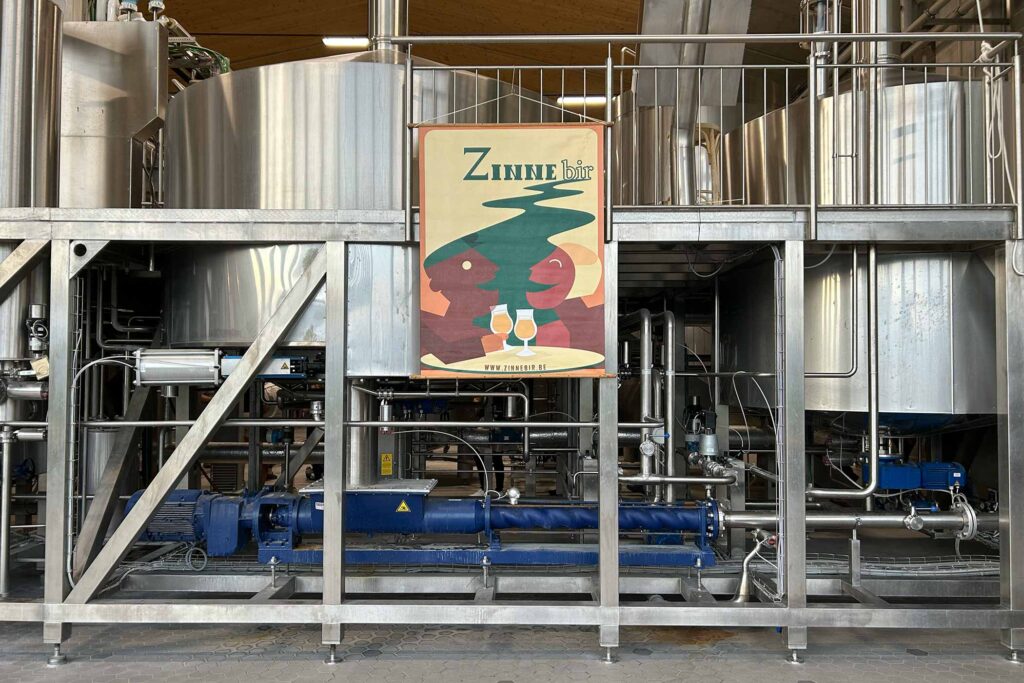
Photography courtesy of Grace Weitz | Hop Culture
Through Brussels runs a river. La Senne, Brussels’s essential vein and artery, pumps the city’s lifeblood into and out of the Belgian capital.
“It’s thanks to the river that the city exists,” says De Baets. “And thanks to that [river], we had so many breweries in the city.”
Brasserie de la Senne pays “tribute to our city and its river,” De Baets explains.
But like a river ebbs and flows, full of eddies and currents, Brasserie de la Senne’s path proved tumultuous at times and quite circuitous.
“We started with zero money, like literally nothing,” De Baets says. “Now, when you go to see a banker about opening a brewery, they throw money at your face. … [But] at the time, they would throw stones at your face.”
Unable to fund a space of their own, De Baets and Leboucq rented facilities at both De Ranke and Brasserie Thiriez just across the border in France.
But De Baets makes it clear that they brewed every single batch of beer themselves. “We were still real brewers, just using somebody else’s kettles,” he says.
To make ends meet, he also took up a part-time job at, again, Cantillon.
Over the next four years, and with each batch of beer, De Baets started to navigate the dangerous waters of brewing in Brussels.
Like van Roy had told him years before, De Baets crafted beers that reflected his values.
A Romanticism With Raw Materials
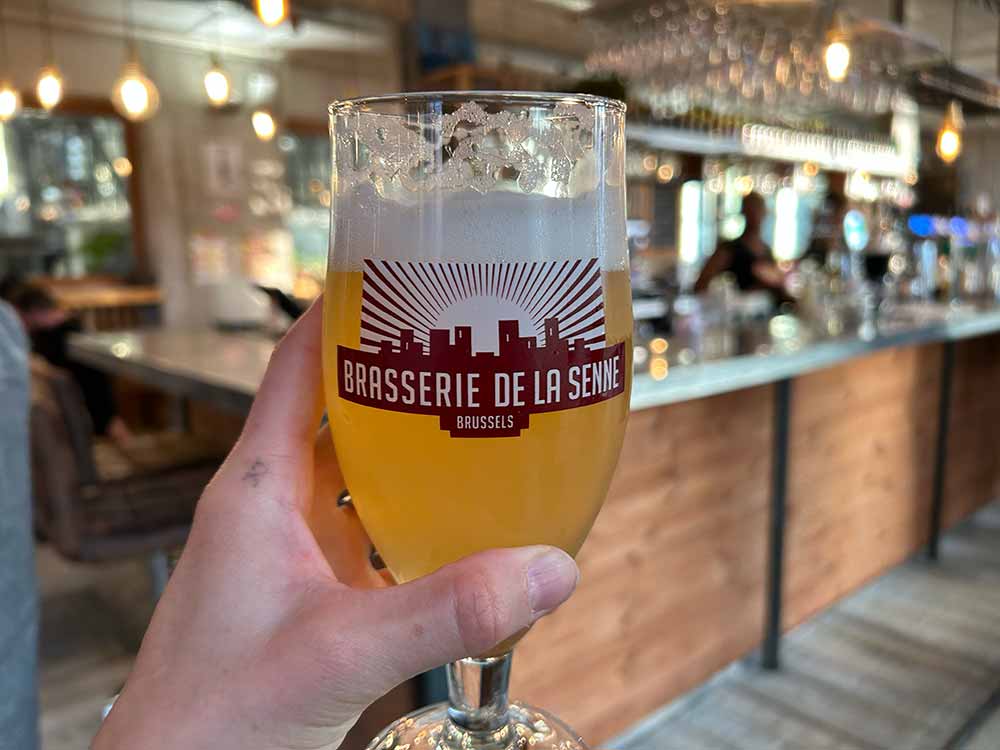
Photography courtesy of Grace Weitz | Hop Culture
At de la Senne, you’ll find beers De Baets likes to drink.
“It’s as simple as that,” he says, noting balance is the key to everything. “I definitely want some hoppy flavor, but I want them to be not overpowering. … And I want to find some malt flavors and fermentation flavors. This is the triangle of taste that I want to find in my beers always.”
De Baets’ philosophy means he buys all his hops directly from the farmers, venturing out to hop harvest himself every year to pick every lot.
He’s looking for not just the right batch of hops but the right batch from the right people. “I know exactly how these people work and what their values are; we have to be aligned in mind,” he says.
Above all the raw materials in the brewhouse, De Baets has the utmost reverence for yeast.
While he legally can’t share precisely where de la Senne got its yeast, De Baets mentions it came from a “very nice, beautiful brewery. And it’s a great yeast.”
Spend any amount of time talking beer with De Baets, and you’ll hear a reverence in his voice when he mentions yeast. He refers to her (the preferred pronoun he uses for yeast) almost like a god.
“We work with one of the most beautiful living beings that exists—yeast,” says De Baets. “And we cherish her. We respect her.”
This means letting her tell him when the beer is ready, not a set schedule. “We always want to leave her the time to do a job without pushing anything,” he says.
And it means incorporating technology smartly.
A Thankfulness for Technology
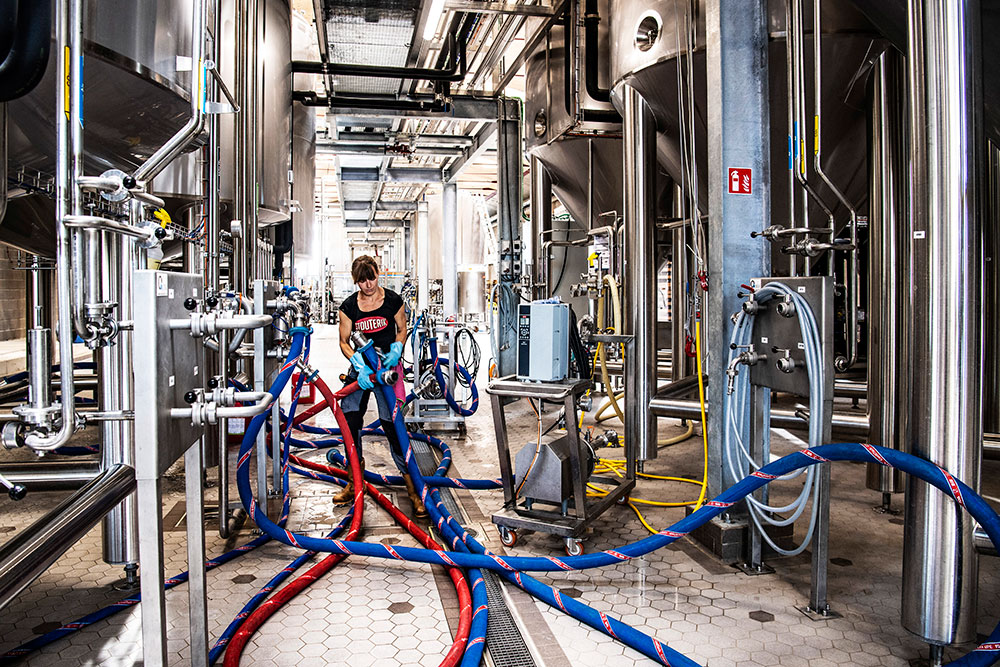
Photography courtesy of Saskia Vanderstichele ©2020
De Baets complements his analog romanticism for raw materials with an appreciation for brewing technology when applied correctly.
“Technology can do the best and the worst, but it’s a question of the choices you make,” he says.
You’ll find this balanced dichotomy everywhere at de la Senne.
For example, De Baets adamantly reminds me that they don’t filter, centrifuge, or, especially, pasteurize.
But technology plays a key role when it comes to bottling, packaging, and fermenting.
De Baets even crafted his own fermentation vessel because he felt the design treated the yeast better.
Historically, brewers used flat, horizontal tanks for fermentation. The taller, cylindrical vessels we see today are a modern invention.
De Baets says he found a familiar pattern when talking with older brewers switching to new equipment. “All of them told me the same story,” he says. “They could never match the quality of the beer before changing to those new tanks.”
De la Senne’s handmade fermenters mimic historical flat open tanks in a more modern, taller, closed conical system.
It’s sort of the best of both worlds.
When I mentioned this seemed genius, something created from scratch, De Baets hedged. “I did nothing revolutionary; I was just inspired by what the old guys did,” he told me while surrounded by mounds of dusty books.
Inspired by what he calls “ancient and new knowledge,” De Baets says he was always amazed by how smart people were centuries ago. “They didn’t know the why of things to a molecular level, but they knew the how,” he says.
And much like De Baets’ brewery honors the heart of Brussels, De Baets says his research helps him “feel very close to those [brewers] who lived 100 years ago.”
At Brasserie de la Senne, Brewing Is Simple But Not Simplistic
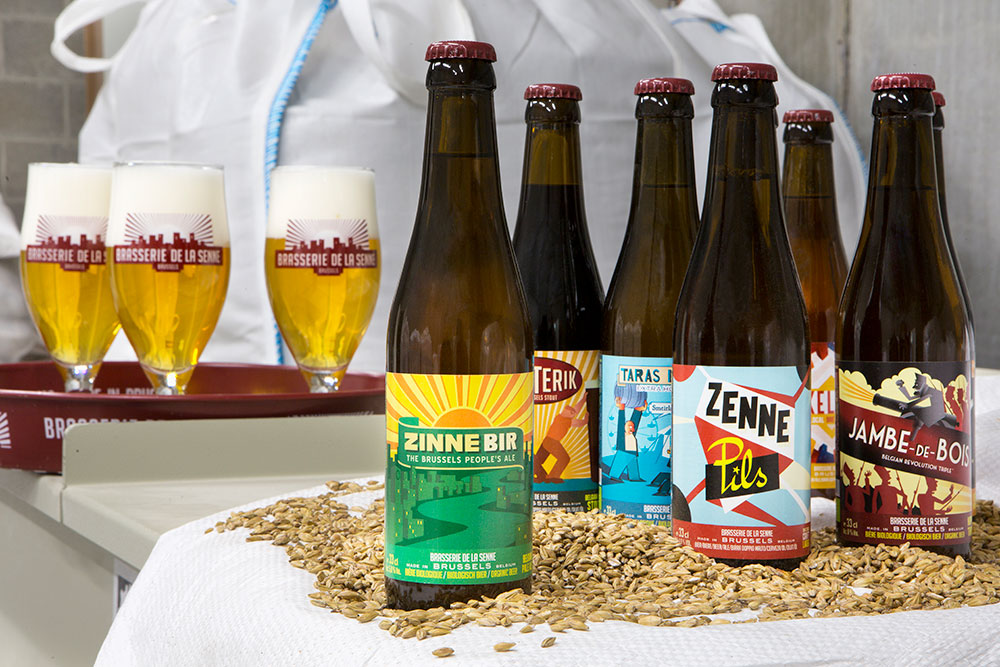
Photography courtesy of Katherine Longly ©2021
If De Baets had to boil his brewing philosophy down to one sentence: “I like the approach to be simple but not simplistic if that makes sense,” he says.
He wants to make beer he likes to drink…simple, right?
But he goes to elaborate lengths to achieve his holy trinity—hops, malt, and yeast all working harmoniously.
So, not simplistic.
Everything seems to be working.
Over the last ten-plus years, De Baets has become transcendental in Brussels.
“Dude’s a hero in Belgium,” Bruz Beers Head Brewer Dave Olson whispered to me as we walked past those custom-made fermenters at de la Senne.
Where Cantillon represents the old guard, de la Senne blazes a path for the new with De Baets’ beers.
Zinnebir
Starting with de la Senne’s Zinnebir, a best-selling flagship in Belgium. Classified as a Belgian pale ale but technically a style De Baets calls Belgian special, Zinnebir is “sort of an English pale, but less hoppy and maltier,” he explains.
They love hops at de la Senne, so De Baets made his version hoppier, drier, and bitter. “It’s the most balanced beer, and this is why it has been such a success,” according to De Baets.
In Brussels, Zinnebir has reached cult status, with the Flemish media now calling places “where the cool people go Zinnebir cafes,” De Baets beams. Everyone in Brussels appreciates this beer.
It’s a massive win for De Baets, who says changing conservative Belgium drinkers’ palates is extremely difficult.
But Zinnebir has won them over.
Taras Boulba
Another beer that put de la Senne on the map, Taras Boulba became an industry favorite. De Baets calls this Belgian blonde a “brewer’s beer,” he says. “It’s a beer that is simple; it’s bitter; it’s dry; it’s packed with Noble hops; it’s light in alcohol and normally everything a brewer likes.”
Of course, it’s no surprise that De Baets first made this beer for himself and his brewers.
Long, exhausting brew days left De Baets and his team thirsty. But with only the almost-6%-ABV Zinnebir to drink, “It was a bit too high in alcohol to be in good shape for the next day,” he says.
De Baets made the lighter, lower-ABV Taras Boulba to have something for him and his team to drink at the end of the brew day.
But as friends stopped by and tried it, they went crazy for it. In stark contrast to the heavier, sweeter beer historically found in Belgium, Taras Boulba drinks light, refreshing, and quaffable. What started as a “beer never intended to leave the brewery,” says De Baets, has now become their second best-seller.
Saison de la Senne
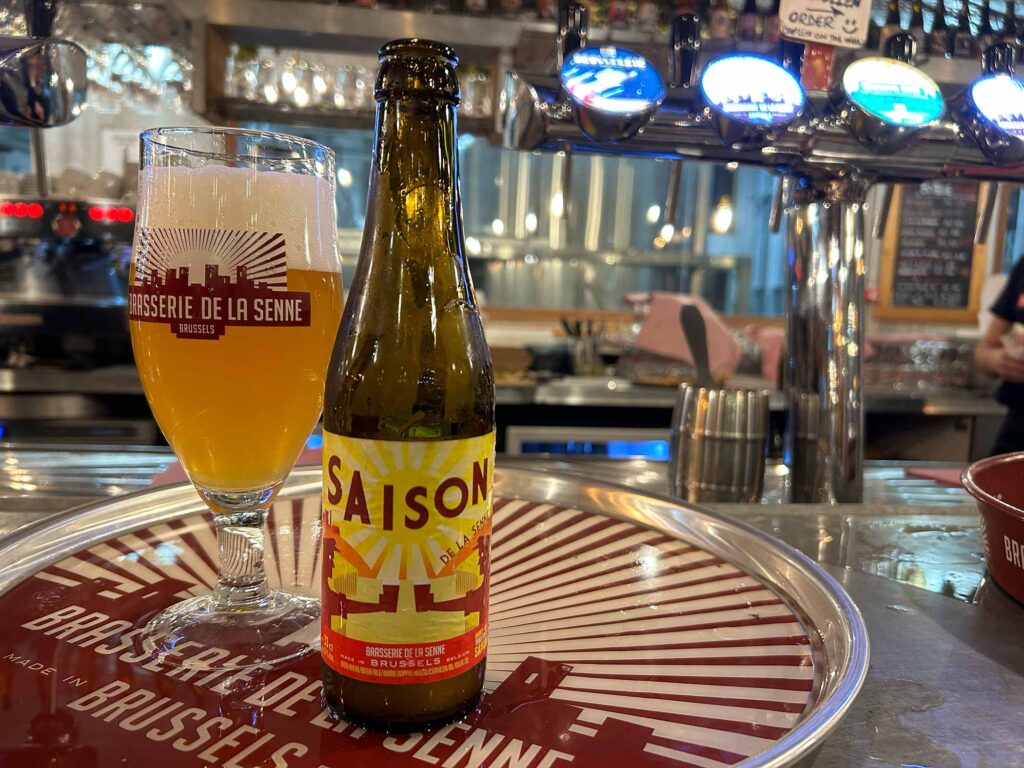
Photography courtesy of Grace Weitz | Hop Culture
During my visit to de la Senne, our group also tried Saison de la Senne, a spelt saison blended with Cantillon’s lambic (a batch De Baets handpicked himself) and aged for two years in wood.
And while you may think blending a saison with a lambic sounds odd, it’s actually a historical practice.
De Baets, who co-authored a book on saison in 2004, has spent plenty of time studying what he calls “one of the most difficult styles to understand among Belgian beers.”
According to him, saison was closely related to gueuze in the nineteenth century. “They were like bitter gueuzes in the old days,” he shares. “You always had a certain level of acidity.”
He says, at the time, brewers frequently blended a young beer with a sour beer to “vaccinate” it and keep it from spoiling. Sour beers helped lower the pH of the beer, protecting it from bacteria.
In the early twentieth century, adding sour beer to a saison was commonplace in Brussels. In fact, according to De Baets, many lambic producers would only make sour bulk beer to sell to other breweries for blending.
Respecting this practice, Saison de la Senne sort of perfectly encapsulates de la Senne, a more modern brewery on the surface, reflecting old, cherished values underneath.
Something Old, Something New, Something Borrowed, Something You
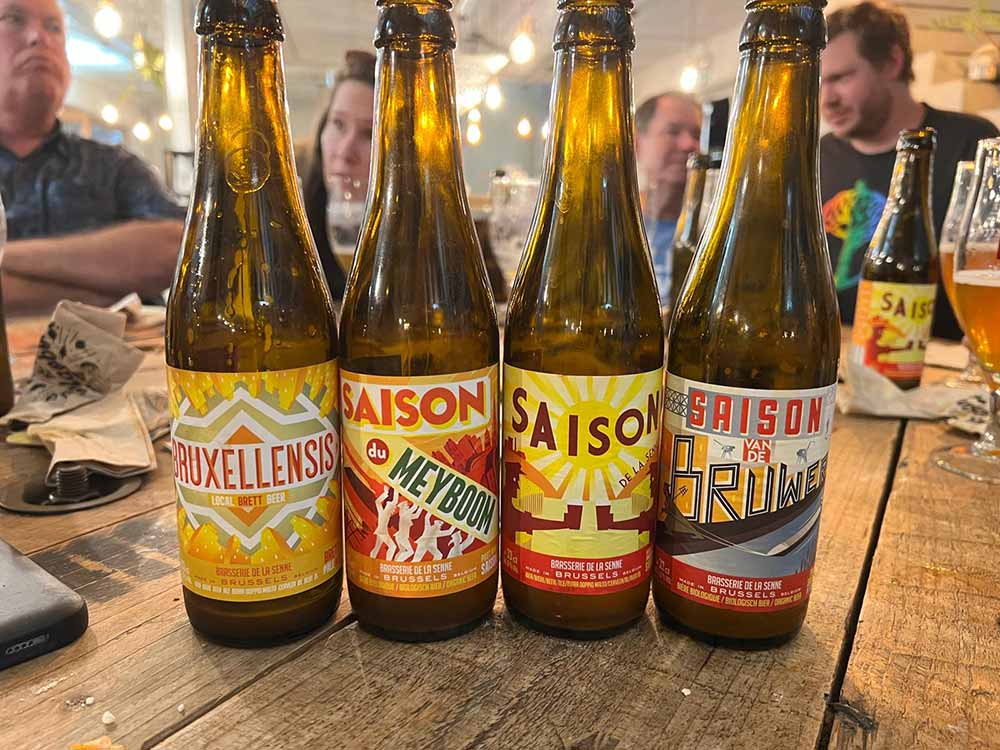
“We really want our beers to be liquid us,” De Baets says. “They have to represent who we are, our values, and our way of making things.”
For the future, De Baets says his next project will be to make a beer even lighter than Taras Boulba.
“I’ve been drinking a very long time, so I should start focusing on the future of my liver, maybe,” he laughs.
Again, simple but not simplistic.
Making lighter beers can be a very complex process, coaxing out a depth of flavor while staying at a lower ABV.
So, while he wants to make a beer around 3-3.5% ABV, De Baets says it has to be “A real beer, fully fermented with our yeast, full of flavor and texture. This is a very difficult challenge to achieve.”
But De Baets relishes the pressure of a puzzle.
It’s his favorite part of the job.
That and making something that encourages people to come together around the table.
Because at the end of the day, whether now or in the past, De Baets says, “I see beer as a noble product for everyone.”

